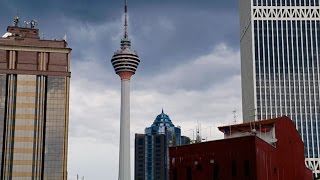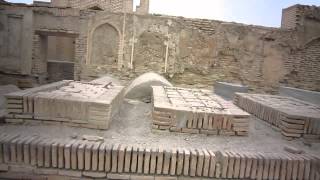Wednesday, 24 December, 2025г.
















Где искать: по сайтам Запорожской области, статьи, видео ролики
пример: покупка автомобиля в Запорожье
Bishkek & Amazing - The Capital and The Largest City Part II
Bishkek & Amazing - The Capital and The Largest City Part II - Bishkek (in Kyrgyz and Russian: Бишкéк), formerly Pishpek and Frunze, is the capital and the largest city of the Kyrgyz Republic. Bishkek is also the administrative centre of Chuy Province which surrounds the city, even though the city itself is not part of the province but rather a province-level unit of Kyrgyzstan.
Bishkek is situated at about 800 metres (2,600 ft) altitude just off the northern fringe of the Kyrgyz Ala-Too range, an extension of the Tian Shan mountain range, which rises up to 4,855 metres (15,928 ft) and provides a spectacular backdrop to the city. North of the city, a fertile and gently undulating steppe extends far north into neighbouring Kazakhstan. The Chui River drains most of the area. Bishkek is connected to the Turkestan-Siberia Railway by a spur line.
Originally a caravan rest stop (possibly founded by the Sogdians) on one of the branches of the Silk Road through the Tian Shan range, the location was fortified in 1825 by the Uzbek khan of Kokhand with a mud fort. In the last years of Kokhand rule the fortress was led by Atabek, the Datka.
Though the city is relatively young, the surrounding area has some sites of interest dating from prehistory, the Greco-Buddhist period, the period of Nestorian influence, the era of the Central Asian khanates, and the Soviet period.
Russian Orthodox cathedral of Holy Resurrection.
National Historical Museum
The central part of the city is primarily built on a rectangular grid plan. The city's main street is the east–west Chui Avenue (Chuy Prospekti), named after the region's main river. In the Soviet era, it was called Lenin Avenue. Along, or within a block or two from it, many of the most important government buildings, universities, the Academy of Sciences compound, and so on, are to be found. The westernmost section of the avenue is known as Deng Xiaoping Avenue.
Bishkek has a humid continental climate (Köppen climate classification Dsa)[6] averaging 322 clear days annually due to its mountainous location. Average precipitation is around 440 millimetres (17 in) per year. Average daily high temperatures range from −3 °C (26.6 °F) in January to about 31 °C (87.8 °F) during July.[7] The summer months are dominated by dry periods experiencing the occasional thunderstorm which produces strong gusty winds and rare dust storms. The mountains to the south provide a natural boundary to provide protection from much of the damaging weather along with the smaller chain which runs NW to SE. In the winter months, sparse snow storms and frequent heavy fog are the dominating features. When an inversion sets up, the fog can last for days at a time.
More Info: http://en.wikipedia.org/wiki/Bishkek
Bishkek06: Jessica Gardner
https://www.flickr.com/photos/pjgardner/3548601565
Bishkek07: Jessica Gardner
https://www.flickr.com/photos/pjgardner/3548601281
Bishkek08: Jessica Gardner
https://www.flickr.com/photos/pjgardner/3548602073
Bishkek09: Thomas Depenbusch
https://www.flickr.com/photos/depenbusch/6020151195
Bishkek10: Chris Price
https://www.flickr.com/photos/pricey/8188974166
Теги:
Capital City (Type Of Fictional Setting) Bishkek (City/Town/Village) Amazing Nice Bishkek the capital and the largest city the administrative centre of Chuy Province the northern fringe of the Kyrgyz Ala-Too range the Tian Shan mountain range North of the city the Turkestan-Siberia Railway The central part of the city Tourist Destination Tourism (Interest) Bishkek & Amazing - The Capital and The Largest City Part II
Похожие видео
Мой аккаунт


 У вашего броузера проблема в совместимости с HTML5
У вашего броузера проблема в совместимости с HTML5


